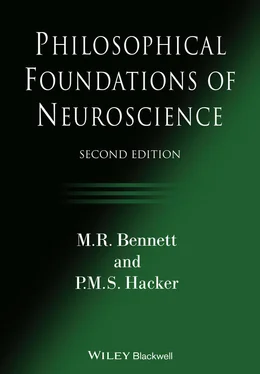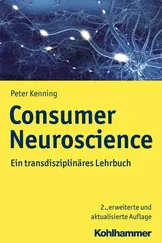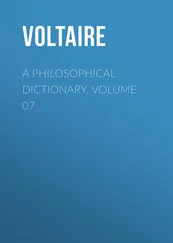Reply to Blakemore’s objection that applying psychological predicates tothe brain is merely metaphorical
The fourth methodological objection was raised by Colin Blakemore. Of Wittgenstein’ s remark that ‘only of a living human being and what resembles (behaves like) a living human being can one say: it has sensations; it sees; is blind; hears; is deaf; is conscious or unconscious’, Blakemore observes that it ‘seems trivial, maybe just plain wrong’. Addressing the accusation that neuroscientists’ talk of there being ‘maps’ in the brain is pregnant with possibilities of confusion (since all that can be meant is that one can map, for example, aspects of items in the visual field on to the firing of cells in the ‘visual’ striate cortex), Blakemore notes that there is overwhelming evidence for ‘topographic patterns of activity’ in the brain.
Since Hughlings Jackson’ s time, the concept of functional sub-division and topographic representation has become a sine qua non of brain research. The task of charting the brain is far from complete but the successes of the past make one confident that each part of the brain (and especially the cerebral cortex) is likely to be organized in a spatially ordered fashion. Just as in the decoding of a cipher, the translation of Linear B or the reading of hieroglyphics, all that we need to recognize the order in the brain is a set of rules – rules that relate the activity of the nerves to events in the outside world or in the animal’ s body. 34
To be sure, the term ‘representation’ here signifies merely systematic causal connectedness. That is innocuous enough. But it must not be confused with the sense in which a linguistic item (e.g. a presentation) can be said to represent something fairly or unfairly, a map to represent that of which it is a map, or a painting to represent that of which it is a painting. Nevertheless, such ambiguity in the use of ‘representation’ is perilous, since it is likely to lead to a confusion of the distinct senses. Just how confusing it can be is evident in Blakemore’ s further observations:
Faced with such overwhelming evidence for topographic patterns of activity in the brain it is hardly surprising that neurophysiologists and neuroanatomists have come to speak of the brain having maps , which are thought to play an essential part in the representation and interpretation of the world by the brain, just as the maps of an atlas do for the reader of them. The biologist J. Z. Young writes of the brain having a language of a pictographic kind: ‘What goes on in the brain must provide a faithful representation of events outside it, and the arrangements of the cells in it provide a detailed model of the world. It communicates meanings by topographical analogies.’ 35But is there a danger in the metaphorical use of such terms as ‘language’, ‘grammar’, and ‘map’ to describe the properties of the brain? … I cannot believe that any neurophysiologist believes that there is a ghostly cartographer browsing through the cerebral atlas. Nor do I think that the employment of common language words (such as map, representation, code, information and even language) is a conceptual blunder of the kind [imagined]. Such metaphorical imagery is a mixture of empirical description, poetic license and inadequate vocabulary. 36
Whether there is any danger in a metaphorical use of words depends on how clear it is that it is merely metaphorical, and on whether the author remembers that that is all it is. Whether neuroscientists’ ascriptions to the brain of attributes that can be applied literally only to an animal as a whole is actually merely metaphorical (metonymical or synecdochical) is very doubtful. Of course , neurophysiologists do not think that there is a ‘ghostly cartographer’ browsing through a cerebral atlas – but they do think that the brain makes use of the maps. According to Young, the brain constructs hypotheses , and it does so on the basis of this ‘topographically organized representation’. 37The moot question is: what inferences do neuroscientists draw from their claim that there are maps or representations in the brain, or from their claim that the brain contains information, or from talk (J. Z. Young’ s talk) of ‘languages of the brain’? These alleged metaphorical uses are so many banana skins in the pathway of their user. He need not step on them and slip, but he probably will.
Blakemore’s confusion
Just how easy it is for confusion to ensue from what is alleged to be harmless metaphor is evident in the paragraph of Blakemore quoted above. For while it may be harmless to talk of ‘maps’ – that is, of mappings of features of the perceptual field on to topographically related groups of cells that are systematically responsive to such features – it is anything but harmless to talk of such ‘maps’ as playing ‘an essential part in the representation and interpretation of the world by the brain, just as the maps of an atlas do for the reader of them’ (our italics). In the first place, it is not clear what sense is to be given to the term ‘interpretation’ in this context. For it is by no means evident what could be meant by the claim that the topographical relations between groups of cells that are systematically related to features of the perceptual field play an essential role in the brain’ s interpreting something. To interpret, literally speaking, is to explain the meaning of something, or to take something that is ambiguous to have one meaning rather than another. But it makes no sense to suppose that the brain explains anything, or that it apprehends something as meaning one thing rather than another. If we look to J. Z. Young to find out what he had in mind, what we find is the claim that it is on the basis of such maps that the brain ‘constructs hypotheses and programs’ – and this only gets us deeper into the morass.
More importantly, whatever sense we can give to Blakemore’ s claim that ‘brain maps’ (which are not actually maps) play an essential part in the brain’ s ‘representation and interpretation of the world’, it cannot be ‘ just as the maps of an atlas do for the reader of them ’. For a map is a pictorial representation, made in accordance with conventions of mapping and rules of projection. Someone who can read an atlas must know and understand these conventions, and read off, from the maps, the features of what is represented. But the ‘maps’ in the brain are not maps, in this sense, at all. The brain is not akin to the reader of a map, since it cannot be said to know any conventions of representation or methods of projection or to read anything off the topographical arrangement of firing cells in accordance with a set of conventions. For the cells are not arranged in accordance with conventions at all, and the correlation between their firing and features of the perceptual field is not a conventional but a causal one. 38
Blakemore’ s suggestion that neuroscientists use metaphorical and figurative language because of the poverty of the English language and lack of adequate concepts is a point which we shall examine later (§17.2). 39
Reply to fourth objection (Searle)
Searle indeed drew our attention to an interesting conceptual complexity, which is worth disentangling if one is to avoid his confusions. It is a subtle matter, involving the important distinction between the body a human being is and the body a human being has . A human being is a sentient, living spatio-temporal substance ( Homo sapiens ) consisting of flesh and bones, with the power of self-movement as well as intellectual powers of reason and will. We also use the idiom of having a body (e.g. one may have a beautiful, lithe, athletic, powerful, aged, frail body), which idiom is used to speak of somatic characteristics of the human being we are. 40Everything true of the body we have is true of the body we are, but not vice versa. If my body is dirty, covered with scratches, and sunburnt, then I am dirty, covered with scratches and sunburnt. But if I am thinking of relativity theory, remembering last year’ s holiday, and wondering what to do, my body – the body I have – is neither thinking, remembering, nor wondering, since these are not somatic properties.
Читать дальше












